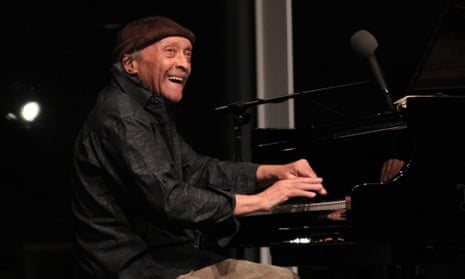The jazz pianist Cecil Taylor has died at the age of 89, at home in Brooklyn. The cause of death is unknown, but musician Evan Parker and Robert Rusch of Cadence Jazz, the label that released Taylor’s final album, The Last Dance, confirmed that Taylor passed on 5 April.
Taylor was one of the key figures in the free jazz revolution, a change heralded by the pianist’s 1956 album Jazz Advance, which upended the 1950s “cool school” sound. By the mid-1960s, he was ranked alongside fellow virtuosi Ornette Coleman, John Coltrane and Albert Ayler, and became known for his live improvisational marathons.
Despite his radicalism – or perhaps because of it – Taylor found himself ostracised by many mainstream jazz clubs, and earned a living washing dishes and working at a dry-cleaning company. The audience laughed during his first official performance, leading the promoter to cancel his appearance the following night – a pattern that would continue through his early shows in conventional jazz clubs, which confounded listeners.
Born in 1929 in Queens, New York, Taylor was the only child of a middle-class family, with an adoring mother who fostered his prodigal talent. He began playing piano at the age of six, and later studied at the New York College of Music and New England Conservatory, where he studied the work of Stravinsky, Bartók and Elliott Carter.
In an interview with the Guardian’s jazz critic John Fordham in the late 1980s, Taylor talked of his mother’s encouragement, describing “the difficulty that I had with certain major jazz impresarios on the rare occasions they claimed they were going to make me star. Mama had already made me a galaxy. So I knew those people don’t really give you anything. They say, ‘We will give you money, but we want you to play this, or that.’ And I always thought, if I’m going to do that, I might as well go back and be a dishwasher.”
Taylor’s unique style – “tone clusters” over chords, spontaneity above all – was too personal to influence mainstream jazz piano idioms, but made him an inspiration to the international avant garde. He frequently associated with fellow improv stars including Evan Parker, Han Bennink and Derek Bailey, and maintained a long-lasting partnership with the British percussionist Tony Oxley.
He also frequently collaborated with the dance world, comparing his playing style to “the leaps in space a dancer makes”, and composing the music for the 1979 Mikhail Baryshnikov ballet Tetra Stomp: Eatin’ Rain in Space. In 2016, he was the subject of a retrospective at the Whitney museum in New York City titled Open Plan: Cecil Taylor.
In 2014, Taylor was defrauded out of nearly $500,000 by a contractor. Neil Muir, from Long Island, was sentenced to between one and three years in prison for intercepting Taylor’s $492,722.55 (£293,227.02) Kyoto prize from Japan’s prestigious Inamori Foundation in November 2013. In response, Taylor told the thief: “Die.”
Taylor was known for his concise and unsparing statements. In an interview with critic Spencer Richards, Taylor rejected the suggestion that he was a “professional” musician: “I’ve always tried to be a poet more than anything else. I mean, professional musicians die.” In 1991, he told the New York Times: “Someone once asked me if I was gay. I said, ‘Do you think a three-letter word defines the complexity of my humanity?’ I avoid the trap of easy definition.”
On 6 April 1964, Taylor participated in a heated panel discussion at Vermont’s Bennington College about the future of jazz, and addressed the form’s racial origins: “I’m saying that there is one advantage that one has in being a so-called negro: that if one gets out of the gutter, one can see everything from different points of view; one can assimilate everything because one knows what one is – which, up until recently, has not been interesting. I’m saying that people who are enmeshed in situations of subjugation and have to live, have to find ways to project their dignity as human beings – in spite of all the efforts of those around them to degrade them – I’m saying that this music is the manifestation of the dignity in the life that has always been present. And it has always been present in any art: the joy, the sorrow.”
Musicians including Yo La Tengo, guitarist Vernon Reid, Superchunk, Deerhoof and guitarist William Tyler have paid tribute to Taylor. The jazz historian Ted Gioia said he was “one of the great innovators in modern music … one of those rare figures who simply can not replaced, nor forgotten.” The New Yorker music critic Alex Ross described him as “one of the greatest, most unswervingly original, most incorrigibly sublime figures in the recent history of music”.
Taylor’s death follows that of his collaborator Buell Neidlinger, who died age 82 on 16 March. Neidlinger joined Taylor in 1956 and played with his groups until 1961. The pair also released an album under Neidlinger’s name, New York City R&B, which became an artistic landmark in free jazz’s early years.
